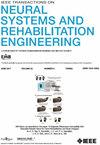Context-Informed Incremental Learning Improves Throughput and Reduces Drift in Regression-Based Myoelectric Control
IF 4.8
2区 医学
Q2 ENGINEERING, BIOMEDICAL
IEEE Transactions on Neural Systems and Rehabilitation Engineering
Pub Date : 2025-03-05
DOI:10.1109/TNSRE.2025.3567245
引用次数: 0
Abstract
Despite decades of research, commercially available powered myoelectric prostheses continue to use sequential, classification-based control. While regression-based approaches can improve the dexterity offered through simultaneous, independent, and proportional control, current training protocols lack consistency across studies and fail to capture realistic user behaviours, resulting in robustness issues. To address these challenges, this work employs context-informed incremental learning (CIIL) in an unconstrained, velocity-based environment for regression-based myoelectric control. Two new adaptive models, one inspired by previous works (O-CIIL) and one modified to factor in user compliance and behaviours (T-CIIL), were compared with two models trained using traditional screen-guided training. Sixteen participants completed an online Fitts’ Law target acquisition task. Both adaptive approaches significantly outperformed (上下文知情的增量学习提高了基于回归的肌电控制的吞吐量并减少了漂移。
尽管经过了几十年的研究,市面上可买到的动力肌电假肢仍在使用顺序的、基于分类的控制。虽然基于回归的方法可以通过同步、独立和比例控制来提高灵活性,但目前的训练协议在研究中缺乏一致性,无法捕获实际的用户行为,从而导致鲁棒性问题。为了解决这些挑战,本研究在无约束的、基于速度的环境中采用了上下文知情的增量学习(CIIL),用于基于回归的肌电控制。两个新的自适应模型,一个受先前作品的启发(O-CIIL),一个修改为考虑用户依从性和行为(T-CIIL),与使用传统屏幕指导训练的两个模型进行了比较。16名参与者完成了在线菲茨定律目标获取任务。两种自适应方法在各种指标上都显著优于非自适应模型(p < 0.05)。此外,T-CIIL在减轻漂移和动作干扰方面优于O-CIIL,这是困扰现有基于回归的肌电控制系统的关键问题。这些发现得到了两个新指标的支持,即动作干扰和同时性增益,这表明增加同时性通常会以不希望的和不可控的同时运动的形式增加不稳定性。这些发现证明了CIIL在无约束、速度控制的环境中用于基于回归的肌电控制的可行性,并强调了在训练基于回归的肌电控制系统时捕获用户行为的重要性。源代码可在GitHub上获得。
本文章由计算机程序翻译,如有差异,请以英文原文为准。
求助全文
约1分钟内获得全文
求助全文
来源期刊
CiteScore
8.60
自引率
8.20%
发文量
479
审稿时长
6-12 weeks
期刊介绍:
Rehabilitative and neural aspects of biomedical engineering, including functional electrical stimulation, acoustic dynamics, human performance measurement and analysis, nerve stimulation, electromyography, motor control and stimulation; and hardware and software applications for rehabilitation engineering and assistive devices.

 求助内容:
求助内容: 应助结果提醒方式:
应助结果提醒方式:


